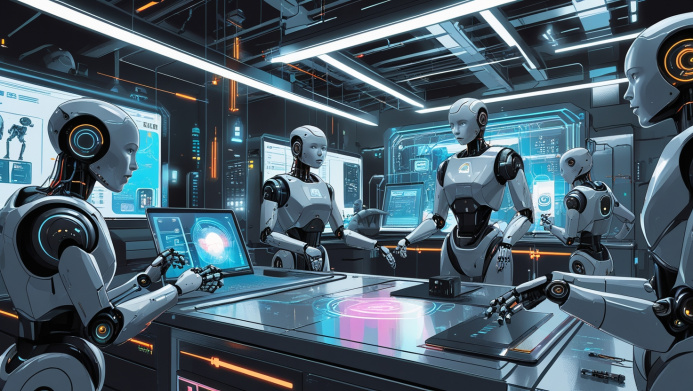Humanoids will be the next step in AI. How to train a robot | Nvidia
28.05.2025 | 10:45 |The next step in artificial intelligence (AI) will be robots that can help alleviate the global labor shortage, according to Nvidia's CEO
In an interview with Euronews Next, Nvidia's vice president of Omniverse and simulation technologies, Rev Lebaredian, said that despite years of trying to create a universal robot, the main problem has always been programming physical machines.
"AI has changed everything. We now have the technology to program robots in a truly universal way, so that regular people, not just robot programming engineers, can train them," he said.
Companies like Tesla are working hard to create humanoid robots and have already made some progress. Last week, Elon Musk's company announced that its Optimus robot had learned to do household chores.
However, robots still have a lot to learn. Nvidia believes that for safety reasons and because of the time it takes, robots should learn tasks in a virtual world. "The only way to create truly intelligent robots is to use simulation," Lebaredian emphasized.
He explained that physical AI requires a huge amount of high-quality data for training, unlike large language models that can learn from large amounts of data available on the Internet. "In order to get all the information needed to teach a robot how to pick up an object, we have to create it somehow. Collecting data in the real world is not possible in sufficient quantities. Even if it were possible, in some cases it is dangerous, time-consuming and expensive," Lebaredian said.
In his opinion, there needs to be a transition from "fossil" data to renewable sources, and the best source for physical data is a physical simulator. Lebaredian believes that industrial use will come first, since even if you create the perfect home robot, it is not a fact that everyone will want to have one.
After a successful "graduation" from the virtual environment, the robot can start working. Lebaredian drew an analogy with a university graduate who has general knowledge, but only becomes truly useful after several years of training in the company's specific data. In robotics, this means that the robot can be specialized by training it with its own data.
Lebaredian did not give an exact date for the appearance of humanoid robots in our lives, but suggested that it will happen "soon."
The first areas of application will be factories and warehouses, where there is a great need for automation due to a shortage of young professionals to replace retiring skilled workers. According to the OECD, the global labor shortage has reached historically high levels.
Lebaredian also mentioned that after industry, humanoid robots could find applications in retail, mines, nuclear reactors, and even space, and in the future, in elderly care.
Speaking about safety, Lebaredian noted that while generative AI still has its inaccuracies, its quality has improved significantly in recent years. He expressed confidence that, as with self-driving cars, over time people will get used to robots, and the technology will become safer and more reliable thanks to rigorous testing and monitoring before implementation.
ORIENT











